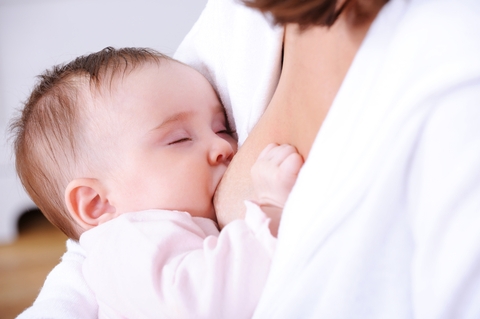How Soon After Childbirth Will the Mother’s Fertility Return?

This is an important question and Natural Family Planning can help provide an answer. Identifying the return of fertility will be easier if the couple has become confident in using NFP before pregnancy.
Following childbirth, all women produce a large quantity of prolactin, which is the hormone that stimulates milk production and suppresses ovulation. There is a physiological period of infertility where the usual signs of fertility are not present. The return of fertility after delivery depends on the re-activation of hormones that stimulate the ovaries. The return of fertility largely influenced by breastfeeding.
What happens if Baby is Bottle Fed?
For a mother who is not breastfeeding, the quantity of prolactin decreases rapidly. The first menstrual-like bleeding usually returns about six or seven weeks after childbirth. The first ovulation can happen before that first bleeding, as early as the fourth week following childbirth.
What happens if Baby is Breastfed?
Breastfeeding influences the centers in the brain that control fertility (the hypothalamus and the pituitary). It stimulates the production of prolactin, a hormone that, in addition to stimulating milk production, will block fertility for some months. The more a woman breastfeeds, the greater the amount of prolactin released. The duration and intensity of breastfeeding are the main factors that determine when fertility will return.

Early Weaning
Ovulation may occur as early as the fifth week postpartum for a mother who breastfeeds for just one month, even if menstruation has not yet returned.
Exclusive Breastfeeding
If a baby is growing normally, and receives no solids or liquids other than breast milk, then natural infertility is certain for the first six weeks following childbirth.
How Reliable is Breastfeeding as a Form of Family Planning?
Research has shown that breastfeeding delays the return of fertility, but certain conditions must be met for it to be considered an effective means of family planning. Women who are interested in using the natural protection of breastfeeding to avoid pregnancy can contact Serena for detailed information about the Lactational Amenorrhea Method.
Lactational Amenorrhea Method (LAM)
LAM is a temporary natural family planning method used to avoid pregnancy after childbirth. A couple using this method has a greater than 98% chance to avoid pregnancy if the three criteria are simultaneously and strictly met:
- The mother is exclusively breastfeeding
(no supplementation with solids or liquids and at least six feedings per 24 hours less than six hours apart). - The baby is less than six months old.
- The mother’s menstrual periods have not returned.

Each of these criteria includes certain exceptions that require precise explanations. Before using LAM, we recommend that you contact a Serena teacher-couple who can provide you with more detailed information. In addition, if circumstances cause a break in one of the conditions just mentioned, Serena’s expertise and guidance can help you to know if LAM can continue to be effective.
Contact Serena or Locate a Teaching Session for more information.
Symptothermal Method after Childbirth

Once the LAM criteria no longer apply (for example, when you bleed or introduce solids), contact Serena. The Symptothermal Method can help you to detect the return of fertility. If a woman is already experienced in evaluating her fertile signs and recording temperature, the Symptothermal Method during breastfeeding will be easier. Regular follow-up from your Serena teacher-couple is available and encouraged. With the expertise and guidance from your teacher-couple, the Symptothermal Method of natural family planning can continue to be effective and a source of support and growth for a couple.

